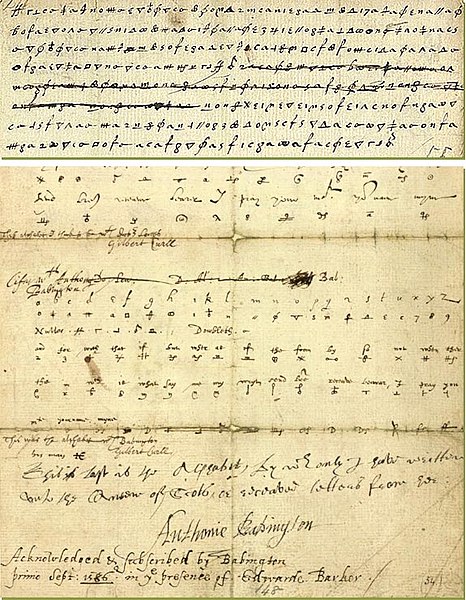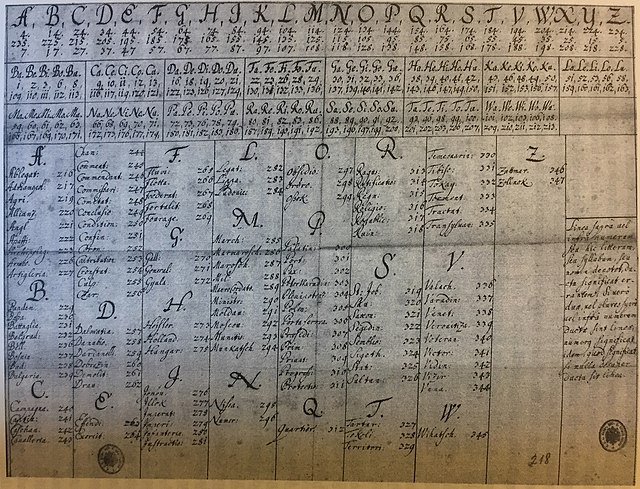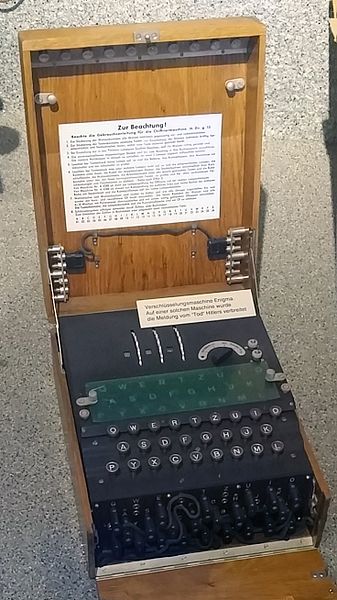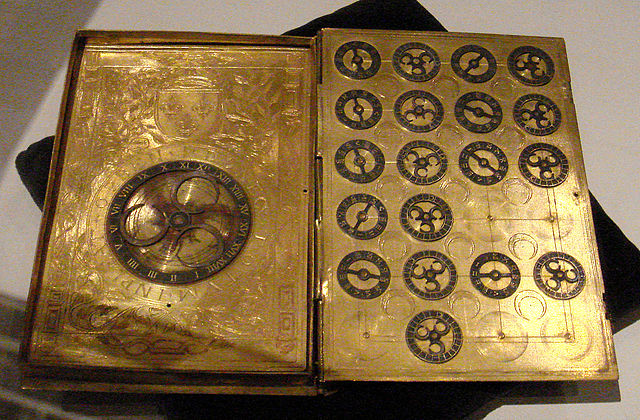In cryptography, a substitution cipher is a method of encrypting in which units of plaintext are replaced with the ciphertext, in a defined manner, with the help of a key; the "units" may be single letters, pairs of letters, triplets of letters, mixtures of the above, and so forth. The receiver deciphers the text by performing the inverse substitution process to extract the original message.
The forged nomenclator message used in the Babington Plot
A French nomenclator code table
Enigma cipher machine as used by the German military in World War II
Cryptography, or cryptology, is the practice and study of techniques for secure communication in the presence of adversarial behavior. More generally, cryptography is about constructing and analyzing protocols that prevent third parties or the public from reading private messages. Modern cryptography exists at the intersection of the disciplines of mathematics, computer science, information security, electrical engineering, digital signal processing, physics, and others. Core concepts related to information security are also central to cryptography. Practical applications of cryptography include electronic commerce, chip-based payment cards, digital currencies, computer passwords, and military communications.
Lorenz cipher machine, used in World War II to encrypt communications of the German High Command
16th-century book-shaped French cipher machine, with arms of Henri II of France
Enciphered letter from Gabriel de Luetz d'Aramon, French Ambassador to the Ottoman Empire, after 1546, with partial decipherment
Whitfield Diffie and Martin Hellman, authors of the first published paper on public-key cryptography.







